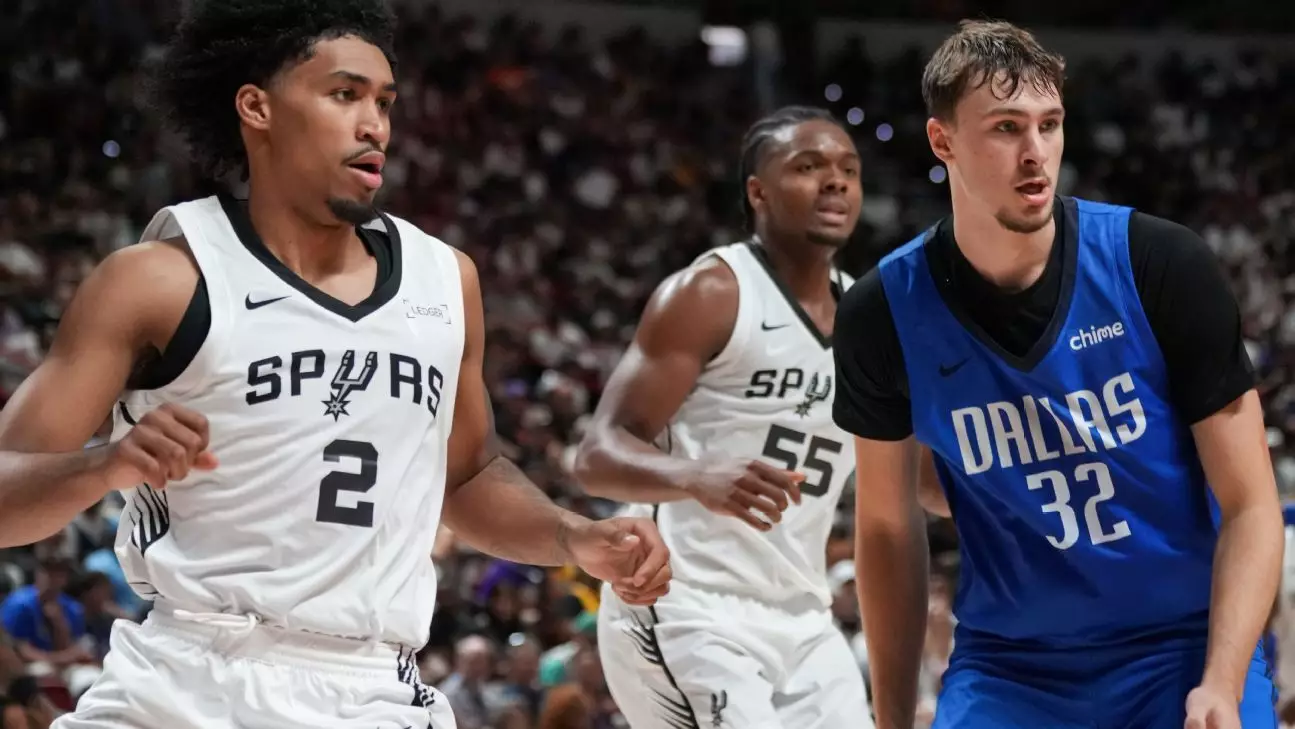The NBA landscape is on the cusp of a significant transformation, and recent summer league action offered a tantalizing preview of what’s to come. The much-anticipated face-off between the top two picks of the 2025 draft, Cooper Flagg and Dylan Harper, did more than just deliver entertainment; it ignited hope among fans and analysts eager to witness the next generation of stars take center stage. Their individual performances transcended typical summer league displays, hinting at a future where these players could redefine the league’s dynamics.
Flagg’s impressive 31-point showcase was nothing short of stellar. His offensive versatility was on full display, with an array of drives, free throws, and highlight-reel dunks. Despite some struggles against elite defenders like Carter Bryant, Flagg demonstrated resilience and adaptability — qualities vital for a player with such high expectations. What stood out most was his ability to elevate his game in moments of pressure, especially in the final minutes of the third quarter, showing that he’s not just a scorer but also a clutch performer capable of contributing decisively under intense circumstances. His performance was a clear indication that the No. 1 overall pick is ready to embrace the challenge of leading a franchise into the future.
Harper’s debut was equally compelling, especially considering he had missed previous summer league games due to injury. His ability to return and immediately impact the game underscores a competitive spirit and mental toughness that bodes well for his NBA journey. His 16-point performance in only 20 minutes, combined with key plays like a high-flying block and clutch finishes, reveal a player with a dynamic skill set and a fearless mindset. Harper’s energy and willingness to attack the rim with authority demonstrate that he possesses the tools to become a primary offensive weapon for his team. And the fact that he’s already asserting himself in such a manner suggests he’s poised to develop into a cornerstone for San Antonio.
The Power of the Stage: What Summer League Reveals About Potential
The setting of the game — packed arenas filled with current stars, veterans, celebrities, and passionate fans — amplified the significance of these performances. Summer league is often overshadowed as a developmental phase, yet in moments like this, it becomes clear that the environment serves as a crucible for future NBA greatness. The energy and pressure make even a seemingly minor game an important stepping stone, and both Flagg and Harper thrived in this atmosphere.
Flagg’s aggressive forays to the free-throw line and Harper’s clutch finishes showcase a mental readiness that surpasses typical rookie jitters. These players aren’t just participating; they’re asserting themselves as future leaders. Their chemistry — even in a short stint — hints at a rivalry that could help define the next decade of NBA basketball. Harp’s remark about future battles indicates an understanding that rivalry fosters growth. As these young talents face off and compete against each other, they push one another to higher levels, fostering a competitive environment essential for long-term development.
The reactions from coaches and seasoned players emphasize the importance of mentorship and growth. Harper’s impactful block and Flagg’s mid-game dunks resonate not only as personal achievements but also as signals to the league that these players are ready for bigger challenges. When a summer league game garners such excitement, it underscores the potential for these prospects to eventually dominate the regular season, possibly reshaping power balances and team strategies.
Changing the Narrative: Expectations Versus Reality for the Next Generation
While these performances generate excitement, a critical eye must consider whether such displays can be extrapolated into sustained NBA excellence. The leap from summer league hero to NBA star is vast, filled with physical, mental, and strategic hurdles. However, what sets Harper and Flagg apart is their evident competitive fire and adaptability — qualities that often distinguish fleetingly talented players from consistent stars.
Flagg’s ability to draw fouls and stay aggressive, even when facing stiff opposition, indicates a mindset focused on growth and resilience. Harper’s varied contributions — including rebounding, steals, and defensive plays — highlight his versatility and basketball IQ. They are not just scorers; they are multidimensional players capable of influencing multiple facets of the game.
Missteps and inconsistencies are inevitable, but their flashes of brilliance serve as proof that they possess the foundational skills and confidence required for NBA success. The challenge now lies in their development, managing expectations, and maintaining a trajectory of improvement. If they continue on this path, their presence could significantly alter the NBA’s landscape, shifting the balance of power towards newer, youthful franchises eager to make their mark.
In truth, the excitement surrounding these young talents is warranted, but balanced skepticism is necessary. Longevity and consistency require patience and meticulous development, but the raw talent and mental toughness displayed suggest they have the potential to lead the league into a new, electrifying chapter. As they improve and adapt, fans and analysts alike will watch eagerly, recognizing that these summer league moments may be just the beginning of something extraordinary.

